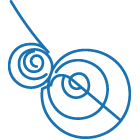Conditional Effects, Observables and Instruments
Abstract
We begin with a study of operations and the effects they measure. We define the probability that an effect $a$ occurs when the system is in a state $\rho$ by $P_{\rho}(a)=\textrm{Tr}(\rho a)$. If $P_{\rho}(a)\ne0$ and $\mathcal{I}$ is an operation that measures $a$, we define the conditional probability of an effect $b$ given $a$ relative to $\mathcal{I}$ by $P_{\rho}(b\mid a)=\textrm{Tr}[\mathcal{I}(\rho)b]/P_{\rho}(a)$. We characterize when Bayes' quantum second rule $P_{\rho}(b\mid a)=\frac{P_{\rho}(b)}{P_{\rho}(a)}\,P_{\rho}(a\mid b)$ holds. We then consider Lüders and Holevo operations. We next discuss instruments and the observables they measure. If $A$ and $B$ are observables and an instrument $\mathcal{I}$ measures $A$, we define the observable $B$ conditioned on $A$ relative to $\mathcal{I}$ and denote it by $(B\mid A)$. Using these concepts, we introduce Bayes' quantum first rule. We observe that this is the same as the classical Bayes' first rule, except it depends on the instrument used to measure $A$. We then extend this to Bayes' quantum first rule for expectations. We show that two observables $B$ and $C$ are jointly commuting if and only if there exists an atomic observable $A$ such that $B=(B\mid A)$ and $C=(C\mid A)$. We next obtain a general uncertainty principle for conditioned observables. Finally, we discuss observable conditioned quantum entropies. The theory is illustrated with many examples.
Quanta 2024; 13: 1–10.
Full Text:
PDFDOI: https://doi.org/10.12743/quanta.v13i1.259
ISSN: 1314-7374

